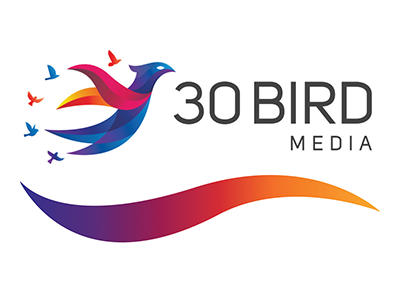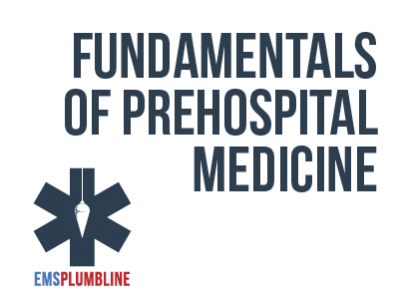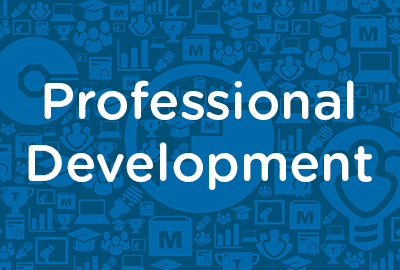 |
Employee Performance: Communication |
1.00 |
Communication is effective when a listener clearly understands a speaker’s message. Good communication fosters a productive exchange of ideas while minimizing the possibility of confusion or misunderstanding.
When trying to communicate with a difficult employee, you must be willing to work with that person to correct the problematic behavior. Openly discussing the behavior can help you find a mutually acceptable solution.
In this course you will learn to: communicate clearly and effectively by using verbal and nonverbal communication, and improve your listening skills, and communicate with difficult supervisors and coworkers, take a proactive approach when dealing with difficult employees, and identify types of employee dismissals. |
 |
Microsoft Project 2021/365 Complete |
16.00 |
30 Bird Media's Microsoft Project 2021/365 Complete courseware covers the concepts and skills needed for maximum productivity in Project, starting with fundamentals and working up to advanced tools and techniques.
There are no specific prerequisites for this course. However, general computer user knowledge is assumed. Any additional experience having worked with forms and/or databases will be helpful.
You will benefit most from this course if you have at least some prior knowledge of project management procedures and practices. It is intended to support you in applying this knowledge through the use of Microsoft Project as a project management tool. |
 |
Prehospital Tracheostomy Care for the BLS Provider |
1.00 |
One of the most intimidating events for a BLS provider is the 911 call for a pediatric patient with a difficult airway. Dr. Christopher Harmon and Paramedic Kuo Downing Reese discuss the challenging topic of the emergent airway and tracheostomy management in the prehospital setting.
Final Exam: This multiple-choice exam is designed to test your knowledge of the material you just reviewed. You have two attempts to gain an 80% or higher on this exam. Please take your time and answer each question carefully. |
 |
Building Upward: Resuscitation of Anaphylactic Shock Part 1—Overview |
1.00 |
Retired ALS provider, Michelle Cerone, speaks with Dr. Jeremy Cushman about the recognition and treatment of anaphylactic shock. This discussion gives the BLS provider the opportunity to compare allergic reactions to the life-threatening condition that requires rapid intervention. Final Exam: Please read each question carefully. You will have two attempts to gain a 70% or higher on this exam. If you are not successful in two attempts, you are welcome to take the course again to gain the certification. |
 |
Exploring Four Areas of Development of Children K-6 for Paraprofessionals |
1.00 |
One of the most helpful ways to gain an understanding of the needs and interests of students ages 5-12 is to examine their development from four different perspectives: physical, cognitive, social, and emotional. It is important for paraprofessionals to keep all four of these areas in mind when helping educators implement classroom activities and experiences. Keeping the four areas of development in mind helps staff to better understand the development of the whole child. |
 |
Preventing Violence at the Workplace - Retail |
0.50 |
This course addresses workplace violence, including its factors and types, and provides strategies for preventing it. |
 |
Coaching: Communication (Instructor Guide) |
1.00 |
Language is an important coaching tool. The use of suitable words during coaching will help you create relationships, repair employee confidence, and establish plans for employee success. As a coach, you must select words that directly influence your employees’ attitude, behavior, and performance. The use of appropriate language during your coaching sessions will help you convey your messages in a clear and encouraging manner.
In this course you will learn to: clearly express your message by using appropriate language, identify and use nonverbal methods of communication, and receive the desired information by asking effective questions.
This Instructor's Edition of this course includes notes and suggestions to assist you in presenting the material, whether in an in-person classroom setting or as an instructor-led online or distance-learning course. It also provides you with the answers to questions found in mid-lesson activities, as well as in the quiz that concludes the course. |
 |
Indoor Air Quality |
1.00 |
This course covers indoor air quality (IAQ) and useful associated skills. You will learn the difference between sick building syndrome and building-related illness, as well as the conditions that cause these illnesses. You will also learn model IAQ policies and practices. |
 |
Sales Management: Forecasting Sales Revenue |
0.50 |
This course will focus on identifying sales forecast factors and types of sales forecasts as well as discussing various types of forecasting approaches. |
 |
Providing Homework Support: Types of Homework Support |
1.00 |
Research indicates there are many different ways to provide effective homework support in school-age programs. When planning a homework support program, it is important for school-age programs to develop a homework philosophy that is consistent with the program’s overall philosophy, and reflects current research on best practices for providing homework help. The homework philosophy should also reflect the needs of parents and children in the program, and strike a balance between homework needs and other experiences that help children grow and learn out-of-school. In this course, we will explore the various types of homework support. |
 |
Call Center Management: Managing for Excellent Service |
1.00 |
This course will cover how to set service levels, achieve service levels, and use reports. |
 |
Creating a Supportive Classroom Community (CDA 3) |
2.00 |
Learn ways to bring out nurturing, caring behaviors in children and youth to create a classroom community where children and youth support each other. Learn how to use non-competitive games to foster acceptance of all children and youth. Identify the strengths and weaknesses for both you and the children and youth in your program, and how to put the strengths to good use creating a sense of acceptance and community. This course is designed to be part of a Child Development Associate (CDA) Credential™ curriculum. It covers CDA Subject Area 3: Supporting Children's Social and Emotional Development and may also be taken as a stand-alone learning event or as part of a broader early childhood education curriculum. |
 |
Managerial Leadership: Defining Employee Roles and Priorities |
1.50 |
A vision is created by an organization to inspire its members to work together to reach for an ideal of what the organization can become. The members of the organization should use the vision as the standard to determine the day-to-day functions of their individual roles. The vision is the guide to use every time an action is taken, a decision is made, or a plan is developed to improve the organization or the people in it. An organization’s vision should enable the members in every role to do what is in the best interest of the organization.
In this course you will learn to: determine leader roles and strengthen employee roles, and align employee priorities and evaluate employee performance. |
 |
Preventing Sexual Harassment and Understanding California Law (Corrections) |
0.50 |
This course will teach California employees how to recognize sexual harassment, defines the rights and responsibilities of employers and employees, and provides an overview of the legal remedies available in sexual harassment lawsuits. |
 |
Interviewing Skills: Handling and Conducting (Instructor Guide) |
1.00 |
Some interviewees demand a particularly focused and skillful use of interviewing techniques. Your ability to handle talkative, uncommunicative, nervous, or inexperienced candidates is important in order to get an accurate assessment of the candidate’s abilities. If you develop ways of handling various types of interviewees before the interview begins, you’ll be able to encourage them to respond positively and share information. You’ll also avoid the mistake of eliminating candidates on the basis of value judgments or preconceptions.
An interview is a two-way conversation designed to gather information about, and provide information to the candidate, so you both can decide on the fit between the position, the organization, and the candidate. Good interviews flow smoothly when both the interviewer and the candidate take part in an information exchange.
In this course you will learn to: handle an interview by developing an understanding of the various types of candidates, and conduct an interview by following a specific structure and using effective communication techniques.
This Instructor's Edition of this course includes notes and suggestions to assist you in presenting the material, whether in an in-person classroom setting, or as an instructor-led online or distance-learning course. It also provides you with the answers to questions found in mid-lesson activities, as well as in the quiz that concludes the course. |
 |
Reducing Turnover in Childcare Settings: Strategies for Administrators |
1.00 |
This course covers strategies for administrators to reduce turnover in childcare settings. It is just one out of many educational courses we offer. This course will help you develop new knowledge about the childcare setting and help you better understand your role as an administrator. |
 |
Hose Competency (Instructor Guide) |
1.00 |
This is the Instructor Guide for Hose Competency. This competency evaluates the ability of assigned companies to perform hose tasks including stretching, advancing, and operating fire hose streams. This competency may also be conducted as an independent drill or evolution. |
 |
Creativity and Innovation: Personal Creativity |
1.34 |
Creativity is often considered a talent that some people have. Actually, creativity's a skill that everyone can nurture through exercise and practice. You can prepare yourself both mentally and physically to be creative.
In this course you will learn to: prepare yourself mentally and physically to be creative, and use your experiences, innocence, intuition, and sense of adventure to increase your creativity. |
 |
Cultural Competence for Paraprofessionals |
0.75 |
Culture and cultural elements are essential components of people's identities. Understanding the cultural elements as paraprofessionals allows for a greater appreciation for students and can improve relationships. Cultural elements may include race and ethnicity, gender, and socio-economic status. These elements of culture are not separate from the larger cultural context in which we live and work, especially as paraprofessionals. It is important to recognize that many culturally and linguistically diverse families have specific customs and traditions that may not necessarily be connected to a particular cultural group. By understanding cultural competence, paraprofessionals can provide responsive instruction and support to students from all backgrounds. |
 |
Conflict and Communication: Why Can't We Be Friends? |
1.00 |
Conflict occurs when we are in relationship with others. In fact, the hallmark of a healthy relationship is not the absence of conflict, but the ability to successfully resolve it. Unfortunately, resolving conflict is not a skill many of us were taught. We'll explore the fundamental causes of conflict and the dynamics that can escalate conflict. Finally, we’ll cover the tools necessary to navigate conflict successfully, including effective communication strategies. |
 |
The Importance of Sensory Rich Play (CDA 2) |
2.00 |
This course explores the research-backed benefits of this exciting form of play, from fostering essential developmental skills to sparking joy and curiosity. However, navigating regulations and concerns in early care settings can be tricky. Dive into practical strategies to empower young children in making choices and assessing risks amidst sensory-rich, highly physical activities, nurturing confident explorers with a deep love for learning. |
 |
Grammar |
1.50 |
Grammar is an essential part of any work environment. However, it can come with many different eccentricities. In this course, you will learn how to avoid common grammar mistakes in both your personal and professional writing. |
 |
Correcting Performance Problems: Disciplining Employees (Instructor Guide) |
1.67 |
Discipline is proactive, as opposed to punishment, which is reactive. Punishment provides a consequence to an action that is deemed unacceptable, whereas discipline is designed to exchange undesirable behavior for satisfactory behavior.
The purpose of disciplining an employee is twofold:
1. To correct or eliminate undesirable behavior, and
2. To provide training that improves or strengthens performance.
In this course you will learn to: keep a disciplinary perspective, determine the cause for disciplining an employee, and prepare for conducting a disciplinary meeting, maintain a positive rapport, avoid pitfalls during a disciplinary meeting with employees, and keep meetings productive, and monitor employee performance and conduct a follow-up meeting with the employee.
This Instructor's Edition of this course includes notes and suggestions to assist you in presenting the material, whether in an in-person classroom setting, or as an instructor-led online or distance-learning course. It also provides you with the answers to questions found in mid-lesson activities, as well as in the quiz that concludes the course. |
 |
Making Your Home A Safer Place |
0.75 |
This course covers household safety. This includes fire and kitchen safety, emergencies, infant safety, and more. This course will help you learn about the best practices for everyone inside the house, from infants to pets. It is just one of the many health and safety courses we offer. |
 |
Quality Management: The Costs Of Quality |
0.50 |
Before the quality revolution that began in the United States in the 1980s, quality was frequently viewed as a goal that came at a higher price for production. However, the reality is that poor quality is a result of the ineffective use of resources, including wasted material and labor. Therefore, improved quality means better use of resources and lower costs.
In this course you will learn to: identify the relationship between quality and cost, the benefits of establishing quality requirements, management’s responsibilities for achieving conformance, and the costs of customer dissatisfaction. |


























